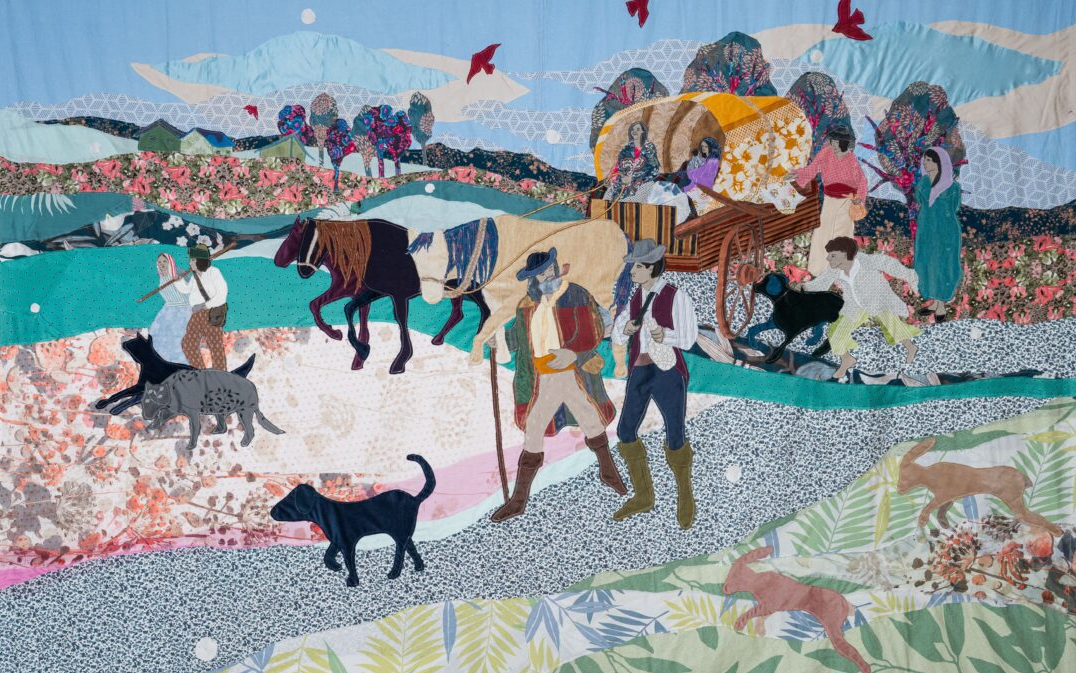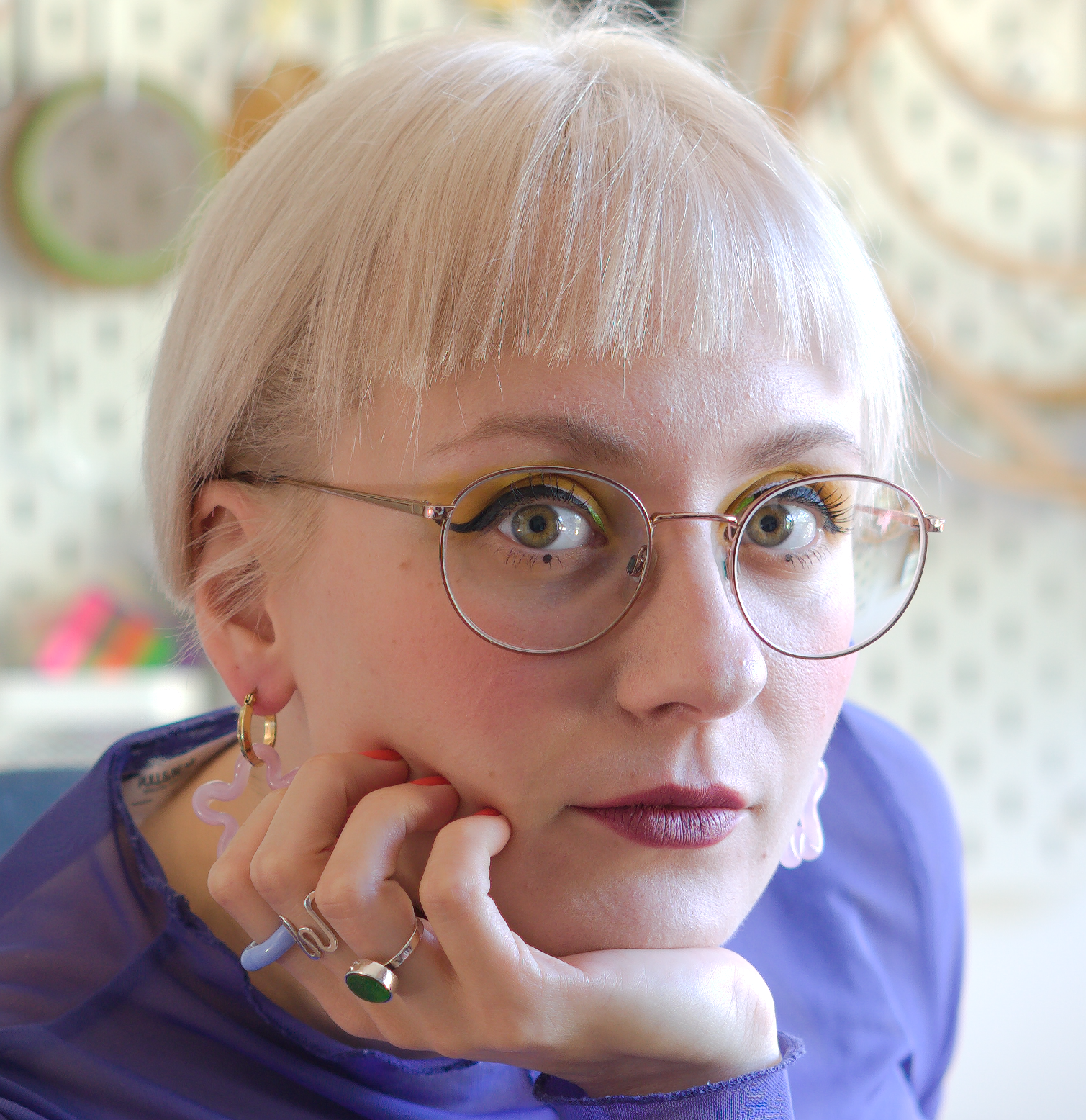Keep our news free from ads and paywalls by making a donation to support our work!

Notes from Poland is run by a small editorial team and is published by an independent, non-profit foundation that is funded through donations from our readers. We cannot do what we do without your support.
By Maja Lorkowska-Callaghan
Roma artists are still rarely represented in art galleries and events. Małgorzata Mirga-Tas, a Polish-Romani artist, is changing that with her vivid textile collages that depict the life, history and customs of Roma communities. The first major UK exhibition of her work will open at Tate St Ives this month.
The Romani people are Europe’s largest ethnic minority, with 10 to 12 million Roma living across the continent, according to the European Commission. Yet it was only in 2022 that Mirga-Tas became the first Roma artist to represent any country at the Venice Biennale, one of the most important events in the art world.
Since representing Poland at Venice, the artist’s profile has been raised outside of Poland, with solo exhibitions in Seville, Berlin and Warsaw, among other cities.
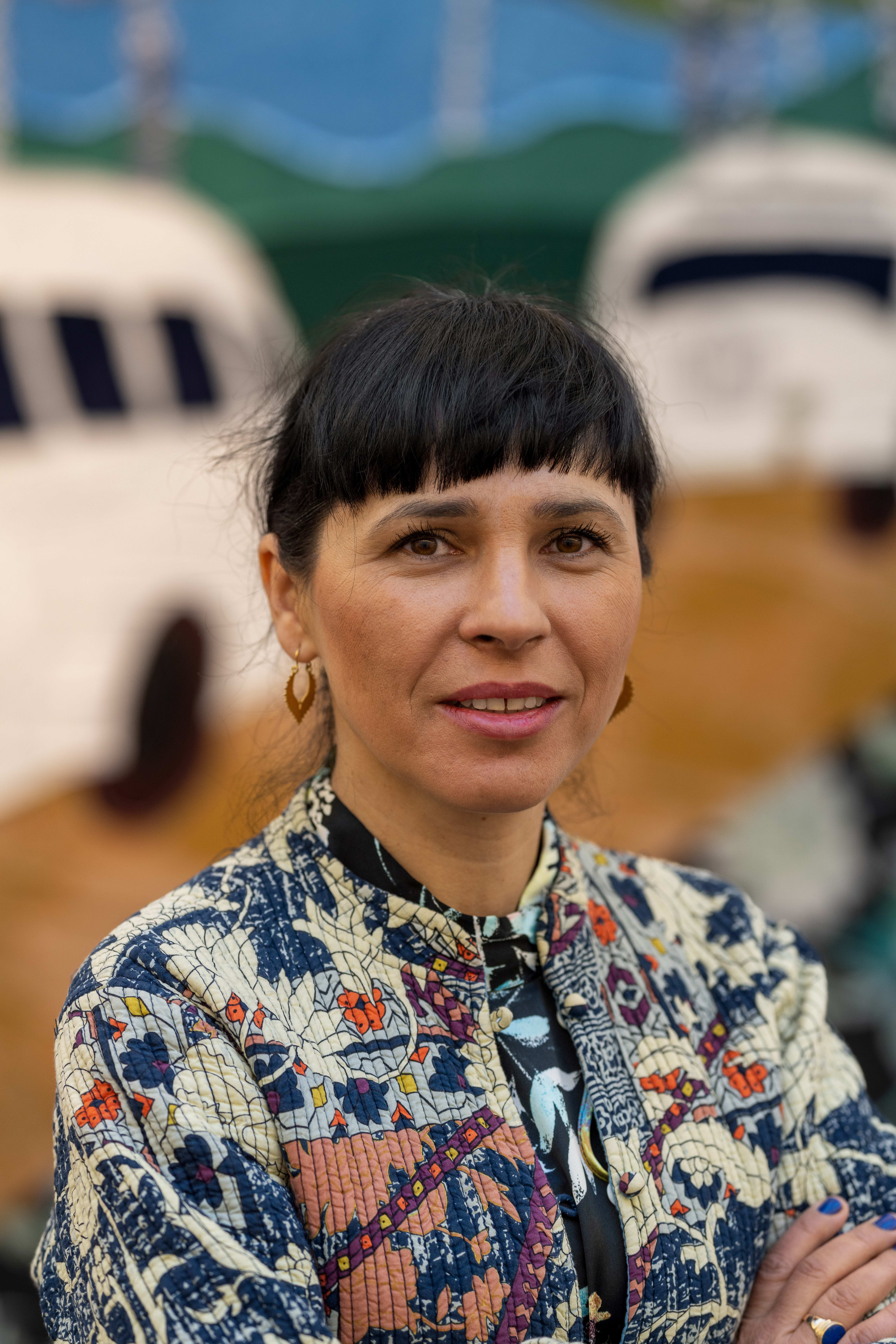
Małgorzata Mirga-Tas, 2023 (photo credit: Hendrik Zeitler)
Born in Zakopane in southern Poland, Mirga-Tas is a Bergitka Roma who currently lives in the Romani settlement in Czarna Góra in the Tatra Mountains. She is best known for large-scale textile pieces where she collages fabrics to create scenes from the daily lives of her community.
The compositions usually depict women, often in groups, talking, sewing, hanging out laundry, and doing other everyday activities. While these may seem prosaic at first glance, in Mirga-Tas’s hands they become tender snapshots of community life – with a palpable sense of sisterhood – that she calls “microcarriers of history”.
The artist’s process is of key significance to the meaning of her work. She sews her pieces with a small group of experienced seamstresses, while the materials they choose are often collected and gifted by friends and family members. The artist’s concern for the environment plays a part too, with secondhand cloth being the most sustainable option.
In some pieces, Mirga-Tas depicts people wearing fabrics that once belonged to them, infusing the portraits with realism and intimacy. Some works feature real earrings, knitting needles and other important possessions, taking on a somewhat relic-like quality. Rather than simply imitating the portrayed person, the pieces carry physical traces of their lives.
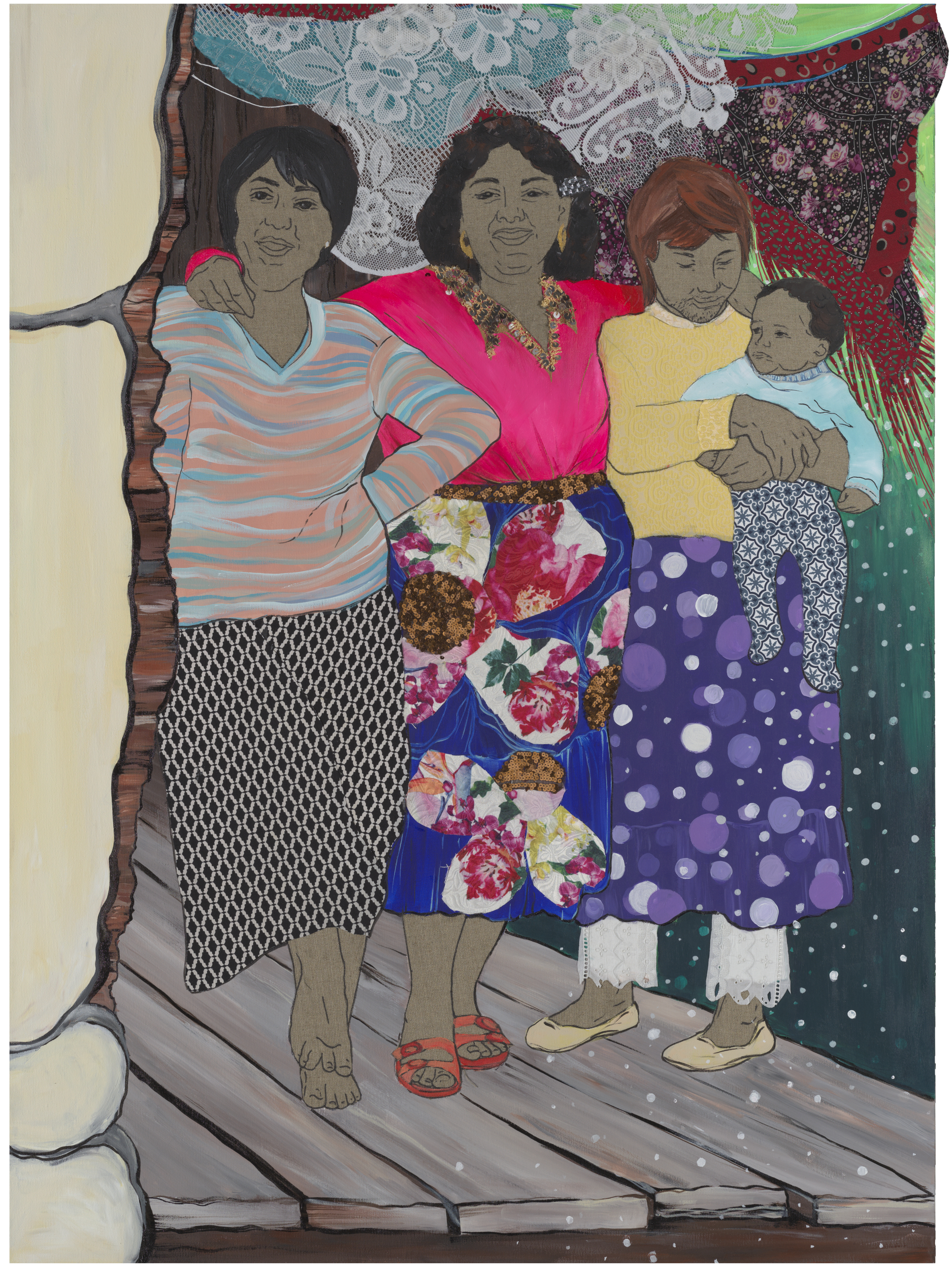
Małgorzata Mirga-Tas, The Three Graces, 2021. © Małgorzata Mirga-Tas. Presented to Tate by the artist in 2022. (photo credit: Marek Gardulski)
Through these images, the artist is building an affirmative iconography for representations of Romani communities. She explains that “the right to speak on your own behalf is everything” as she continues on her mission to record, educate and connect.
Mirga-Tas’s works are created with a feminist lens, specifically described by her as “minority feminism”. Roma women strive for freedom and autonomy for themselves and their children but they do so within the framework of their traditions, staying deeply connected to their roots. By portraying these women, Mirga-Tas gives them a voice, describing her approach as feminism that “does not shout, but…tells stories”.
Anne Barlow, director of Tate St Ives and curator of the upcoming exhibition, describes the artist’s approach as emphasising “the strength of female identity in all its guises, as evidenced in her reflections on, for example, matriarchal family structures, solidarity amongst groups of women, individuals who have survived trauma, or those who have taken on activist or political stances in their lives.”
This is a leading theme in Mirga-Tas’s series Herstories (2019), which includes six large-format fabric portraits of remarkable Romani women from across Europe, such as Turner Prize-nominated artist Delaine Le Bas and Nicoleta Bitu, a leading women’s rights activist and advocate for Roma rights.
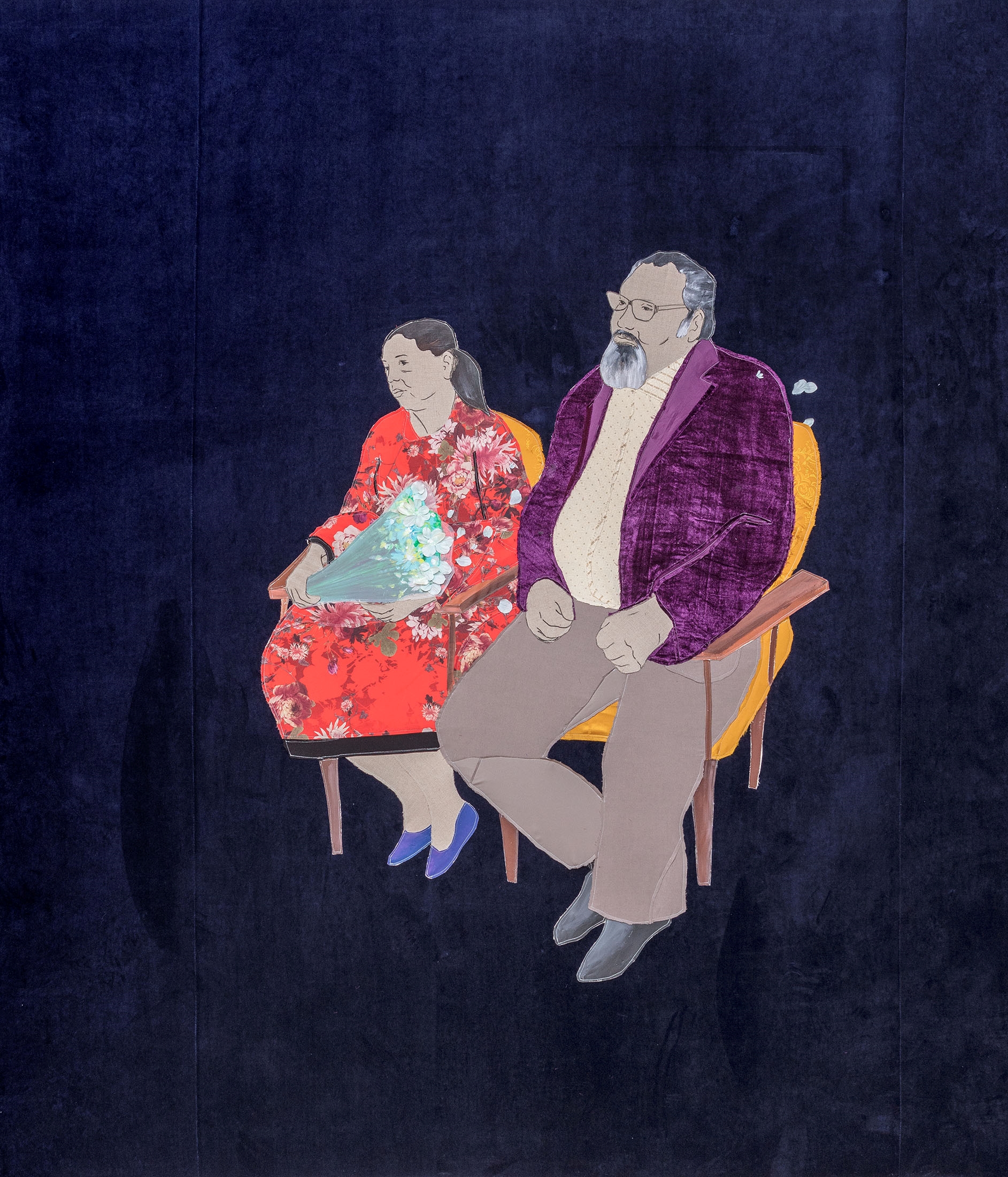
Małgorzata Mirga-Tas, Anna and Jan Gil, from the series Siukar Manusia, 2022. © Małgorzata Mirga-Tas. Courtesy of the artist, Frith Street Gallery, London, Foksal Gallery Foundation, Warsaw and Karma International, Zurich (photo credit: Marek Gardulski)
Similarly, in the series Siukar Manusia (2022), meaning “great people”, the artist created textile portraits based on photographs from family archives. They depict figures who are personally significant to her, from her own family and friends, to Roma activists, musicians and survivors of the Porajmos (the Nazi-German genocide of the Roma).
One such portrait shows Krysytna Gill, a German concentration camp survivor and Poland’s first female Romani tram driver, who also founded the Association of Romani Women in Poland.
Another, a double portrait, shows eminent violinist Augustyn Gabor with his daughter Elżbieta. The figures stand out against the dark background, chosen by the artist to symbolise their appearance out of obscurity. By communicating their lives and legacy to modern audiences, Mirga-Tas keeps them from being forgotten.
The artist also re-appropriates historical works that depict Roma people through stereotypes perpetrated by non-Roma artists.
One such example is the series Out of Egypt (2021), in which she takes Jacques Callot’s 17th-century etchings – which present Romani people as exotic wanderers originating from Egypt – as a starting point for a modern retelling of the Roma story.
She recreates Callot’s compositions using boldly coloured and patterned objects and clothing worn by members of her Roma community. This imbues the scenes with authentic, lived experience, instead of the exoticising colonial gaze of the originals.
All of these approaches are amalgamated in her magnum opus Re-enchanting the World (2022), a set of monumental works created for the Polish Pavilion at the 59th Venice Biennale, presenting the history, mythology and customs of the Roma people.
Mirga-Tas took inspiration from the frescoes at the Renaissance Palazzo Schifanoia in Ferrara, Italy to create 12 panels, each representing a month of the year and split into three sections.
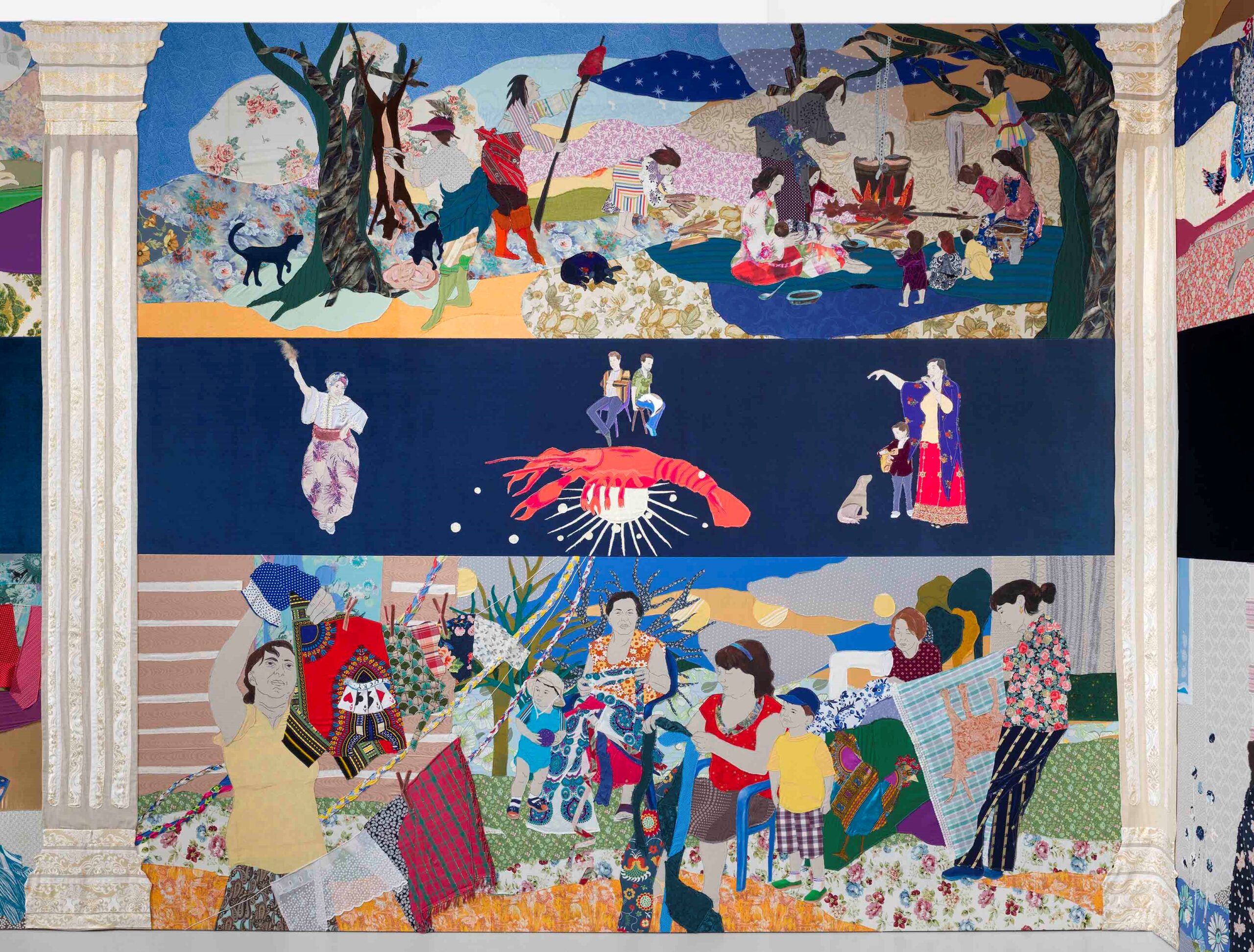
Małgorzata Mirga-Tas, June from the series Re-enchanting the World, 2022. © Małgorzata Mirga-Tas. Collection of Museum of Modern Art, Warsaw (photo credit: Jacopo Salvi)
The top panels show historical depictions of Roma in decolonised versions of Callot’s images through Mirga-Tas’s signature vivid fabrics, while the bottom band captures moments from contemporary Roma life.
Meanwhile, the middle panel consists of more minimalist depictions of women and astrological symbols – their portraits are set against an ink blue background, surrounded by symbols from the zodiac and tarot, transforming real people into mystical deities.
As well as decolonising historical depictions of Roma communities, the artist takes on more recent history. In 2011, she created the Monument to the Memory of the Holocaust of the Romani, a wooden sculpture commemorating 29 Romani murdered by Nazi-German soldiers, located in the forest at the spot where they were killed.
Five years after its creation, the monument was destroyed by unknown vandals. The artist gathered its mutilated remains and cast them in wax, before displaying them as a new piece titled 29: Ceroplastic Exercises (2020). The work becomes all the more powerful as a record of modern day xenophobia, warning that history always has the potential to repeat itself.

Małgorzata Mirga-Tas, from the series Out of Egypt, 2021. © Małgorzata Mirga-Tas. Courtesy of the artist, Frith Street Gallery, London, Foksal Gallery Foundation, Warsaw and Karma International, Zurich (photo credit: Marek Gardulski)
As well as creating wide-reaching art, Mirga-Tas is an educator, facilitator and activist who creates opportunities for other visual artists from similar backgrounds and fights for the visibility of Roma communities.
She has long been involved in several activist initiatives. In her student days, she joined the Roma Society “Harrango”’ to advocate for Roma children and young people.
For 12 years, she collaborated with photographer Marta Kotlarska on a project called Roma Snap (Romski Pstryk), which organised pinhole photography workshops for children. The pair would travel to smaller villages where young participants recreated scenes from Romani folk tales, then photograph them and develop the images in improvised darkrooms.
In 2007, along with two other artists, she started the Romani Art movement to encourage a dialogue between Roma creatives.
Today, Mirga-Tas is President of the Jaw Dikh Foundation, whose purpose is to support educational and creative activities with Roma communities. Since 2011, she has organised the annual, international Jaw Dikh! artist residency in Czarna Góra for Roma and non-Roma artists, resulting in lasting connections and collaborations.
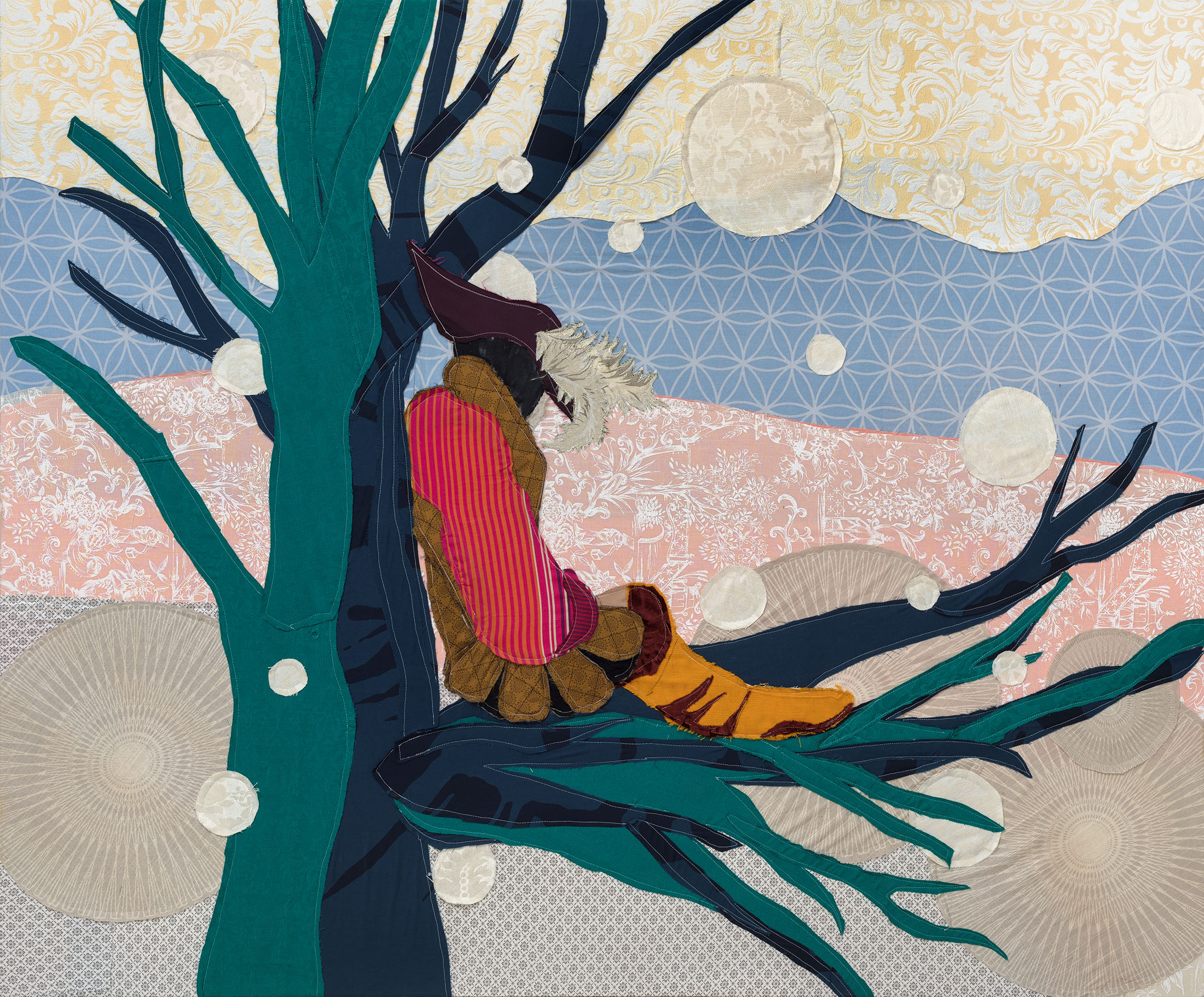
Małgorzata Mirga-Tas, Untitled, 2022. © Małgorzata Mirga-Tas. Courtesy of the artist, Frith Street Gallery, London, Foksal Gallery Foundation, Warsaw and Karma International, Zurich (photo credit: Marek Gardulski)
As a Roma artist, she works from within the community, providing a perspective of warmth and familiarity, one that would be out of reach for a non-Roma artist. Instead of lamenting the lack of Roma representation, she becomes a solution to this problem and tackles it with the joy of someone who is determined to invite everyone along on the journey.
“Mirga-Tas presents affirmative images imbued with strength and dignity, and her work is considered critically important in terms of providing a Romani-led perspective, which is still underrepresented in contemporary art,” explains Barlow. “The impact of her work has been felt by audiences in venues around the world.”
At the Tate St Ives exhibition, works from series such as Out of Egypt and June from Re-enchanting the World will be on display, as well as brand new pieces. “We are particularly excited that Małgorzata has been able to create several new works for this exhibition, which will be on show at Tate St Ives for the very first time,” adds Barlow.
Małgorzata Mirga-Tas is on display at Tate St Ives between 19 October 2024 – 5 January 2025.

Notes from Poland is run by a small editorial team and published by an independent, non-profit foundation that is funded through donations from our readers. We cannot do what we do without your support.
Main image credit: On the Journey, 2024. © Małgorzata Mirga-Tas. Courtesy of the artist and Krupa Art Foundation, Wrocław. Photo: Marek Gardulski
